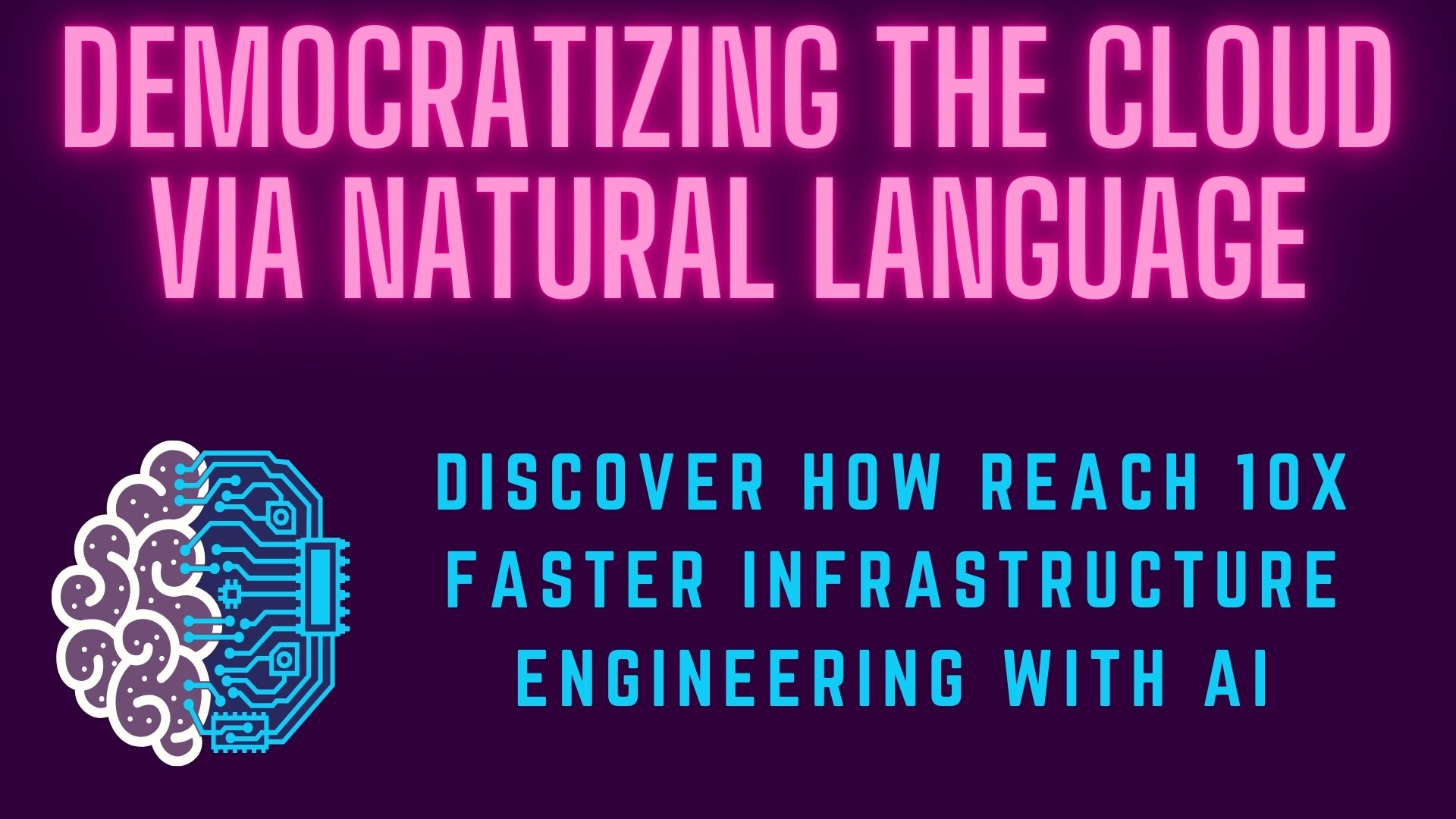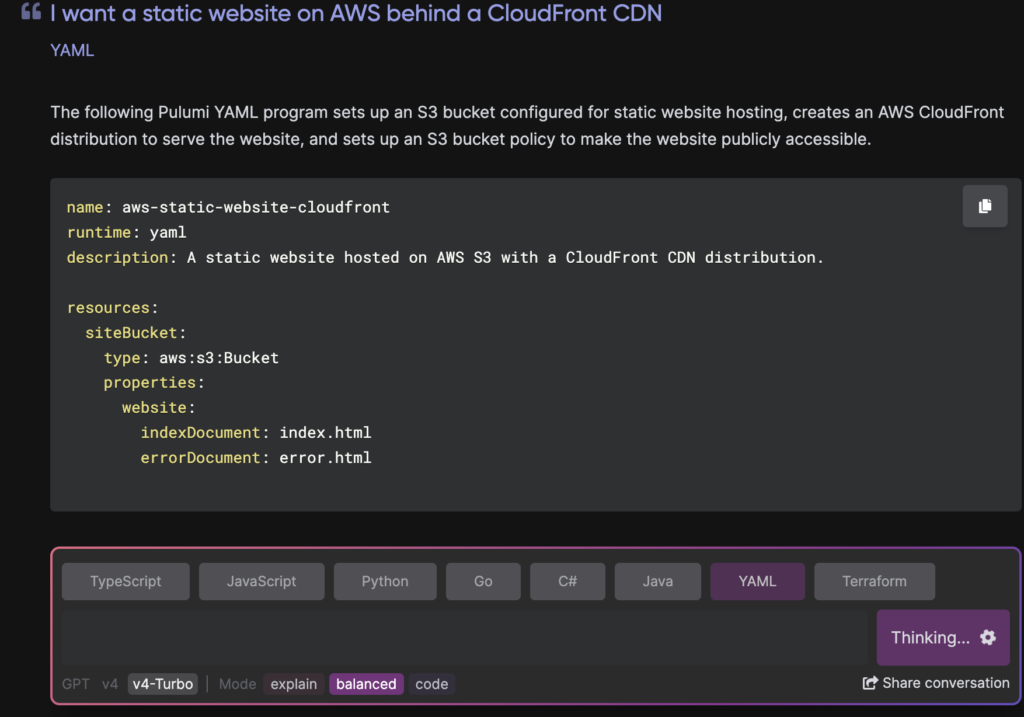
Revolutionizing Cloud Infrastructure: Why Pulumi is the Game-Changer You Can’t Ignore
The ability to efficiently manage cloud infrastructure has become crucial for staying competitive.
Infrastructure as Code (IaC) has transformed how organisations provision and manage their cloud resources, making it a fundamental aspect of modern cloud engineering.
Amidst the myriad of tools available, one platform stands out for its innovative approach: Pulumi. By leveraging familiar programming languages and offering a comprehensive toolset for cloud service management across multiple providers, Pulumi is not just another IaC tool; it’s a paradigm shift that promises to revolutionise cloud infrastructure management.
This issue explores how Pulumi offers a compelling advantage over traditional tools like Terraform, focusing on its unique features, flexibility, and strategic benefits. Whether you’re looking to streamline your cloud operations or harness the full potential of IaC, understanding what Pulumi brings to the table is the first step toward transforming your cloud infrastructure strategy.
Diving Deep into Pulumi
In the swiftly evolving realm of cloud engineering, choosing the right tools for infrastructure management is paramount. Pulumi stands out as a pioneering force, offering a fresh perspective on Infrastructure as Code (IaC). By embracing familiar programming languages and integrating seamlessly across various cloud platforms, Pulumi not only simplifies the deployment of cloud infrastructure but also enhances developer productivity and collaboration.
What Pulumi Brings to the Table
Pulumi is not just another tool in the cloud engineer’s arsenal; it represents a significant leap forward in how infrastructure is managed and provisioned. Unlike traditional IaC solutions that rely on domain-specific languages, Pulumi allows developers to use languages they are already familiar with, such as TypeScript, Python, Go, and .NET. This approach has several advantages:
- Enhanced Productivity: Developers can leverage existing skills and tools, reducing the learning curve and accelerating the development process.
- Greater Flexibility: By using general-purpose languages, Pulumi enables more complex logic and reusable components, offering a more flexible approach to infrastructure management.
- Stronger Collaboration: Developers and infrastructure teams can work together more effectively, using the same languages and tools to manage cloud resources.
Key Features of Pulumi
Pulumi’s innovative approach is backed by a suite of features designed to streamline cloud infrastructure management:
- Multi-Language Support: Pulumi’s support for multiple programming languages means teams can choose the best language for their project, promoting better code reuse and maintainability.
- Real-Time Feedback: Pulumi provides immediate feedback on infrastructure changes, helping teams identify and resolve issues faster.
- State Management: Pulumi offers advanced state management capabilities, ensuring consistent deployments and simplifying infrastructure maintenance.
- Policy as Code: With Pulumi, teams can enforce security, compliance, and best practices through codified policies, enhancing infrastructure security and governance.
The Impact of Pulumi on Cloud Infrastructure Management
Pulumi’s approach to cloud infrastructure management is transformative. By integrating with existing development workflows and tools, Pulumi makes it easier for teams to adopt IaC practices, regardless of their cloud provider or infrastructure complexity. The ability to define infrastructure through code, track changes via version control, and apply continuous integration and deployment practices results in more reliable and scalable cloud environments.
Moreover, Pulumi’s emphasis on programming languages as the foundation for infrastructure definition opens up new possibilities for automation and dynamic infrastructure configuration. This capability is particularly valuable in today’s fast-paced, scalable cloud environments where flexibility and speed are key to success.
In essence, Pulumi is more than just an infrastructure management tool; it is a platform that empowers developers to build, deploy, and manage cloud infrastructure with unprecedented efficiency and control. By bridging the gap between developers and operations, Pulumi fosters a more collaborative and efficient approach to cloud engineering, setting a new standard for IaC.
Pulumi vs. Ansible – The Automation Showdown
Introduction to Ansible
Ansible is widely recognised for its powerful automation capabilities, especially in configuration management and application deployment across diverse environments. It uses simple YAML syntax for its playbooks, making it accessible and easy to start with. Ansible’s agentless architecture and use of SSH for communication streamline operations, particularly in environments where installing an agent is not feasible.
Comparative Analysis
- Language Flexibility and Familiarity: Pulumi’s support for general-purpose programming languages (such as TypeScript, Python, Go, and .NET) offers a stark contrast to Ansible’s YAML-based playbooks. This difference fundamentally affects how complex logic and conditions are implemented, with Pulumi providing a richer, more expressive toolkit for developers.
- Dynamic Infrastructure as Code: Pulumi’s approach enables more sophisticated and dynamic infrastructure configurations using real programming constructs, such as loops and conditionals, offering a significant advantage over Ansible’s declarative style. This capability is particularly beneficial in complex cloud environments where adaptability and customisation are key.
- Multi-Cloud and Cross-Service Orchestration: While Ansible can manage multiple cloud environments, Pulumi is designed from the ground up for multi-cloud strategies, offering seamless integration and management capabilities across AWS, Azure, Google Cloud, and others. This focus ensures that Pulumi is better equipped to handle the nuances and intricacies of cross-cloud deployments.
- AI Enhancements: One of Pulumi’s standout features is its integration of AI to enhance various aspects of cloud infrastructure management, including predictive analysis, resource optimisation, and automated compliance checks. This forward-looking approach offers a proactive means to manage cloud resources more efficiently, a contrast to Ansible’s primarily reactive automation capabilities.
By examining Pulumi in contrast to Ansible, it’s clear that Pulumi offers a distinct advantage in managing cloud infrastructure with greater flexibility, sophistication, and forward-thinking features. This comparison underscores Pulumi’s position as a comprehensive tool designed to meet the evolving needs of modern cloud environments, making it an indispensable tool for organisations looking to leverage the full potential of their cloud infrastructure.
Diving Deep into Pulumi
As we navigate through the era of digital transformation, the efficiency and agility of cloud infrastructure management are paramount. Pulumi emerges not just as a tool but as a groundbreaking platform that fundamentally changes how teams interact with and deploy cloud resources. By blending the familiarity of general-purpose programming languages with the cutting-edge capabilities of artificial intelligence (AI), Pulumi sets a new standard for Infrastructure as Code (IaC).
Pulumi at Its Core
At the heart of Pulumi is its innovative approach to IaC, allowing developers and infrastructure teams to define, deploy, and manage cloud services using languages they are already familiar with, such as TypeScript, Python, Go, and .NET. This move away from domain-specific languages opens the door to a more intuitive and efficient way of working with cloud resources, leveraging existing skills and promoting a deeper understanding of the infrastructure.
Key Features That Set Pulumi Apart
- Multi-Language Support: By supporting popular programming languages, Pulumi breaks down barriers, enabling developers to use their preferred languages for cloud infrastructure tasks, fostering greater collaboration and efficiency.
- AI-Enhanced Automation: Pulumi leverages AI to automate several aspects of cloud infrastructure management, from resource provisioning to security and compliance checks. This integration not only speeds up the development process but also reduces the risk of human error, ensuring more reliable and secure deployments.

- Real Programming Constructs: Utilizing real programming constructs allows for dynamic infrastructure as code, with the ability to implement loops, conditionals, and other logic directly into the deployment scripts. This capability enhances the flexibility and reusability of infrastructure code, making complex deployments more manageable.
- State-of-the-Art Ecosystem Integration: Pulumi’s ecosystem is rich and continuously evolving, with tight integration into CI/CD pipelines, monitoring tools, and cloud services. This seamless integration facilitates more streamlined workflows and a unified toolset for cloud engineering tasks.
The Strategic Impact of Pulumi on Cloud Infrastructure
Pulumi’s approach not only simplifies the technical aspects of cloud infrastructure management but also has a profound strategic impact. By leveraging AI, Pulumi can predict potential issues before they arise, suggest optimizations to improve efficiency and cost-effectiveness, and automate routine tasks, allowing teams to focus on innovation and value creation. Furthermore, the ability to use general-purpose programming languages democratises cloud infrastructure management, bridging the gap between development and operations teams and fostering a culture of collaboration and continuous improvement.
In essence, Pulumi is not just an evolution in the IaC space but a revolution that offers a glimpse into the future of cloud engineering. Its blend of intuitive design, advanced technology, and strategic benefits positions Pulumi as a pivotal tool for any organization looking to optimise their cloud infrastructure for the challenges of tomorrow.



